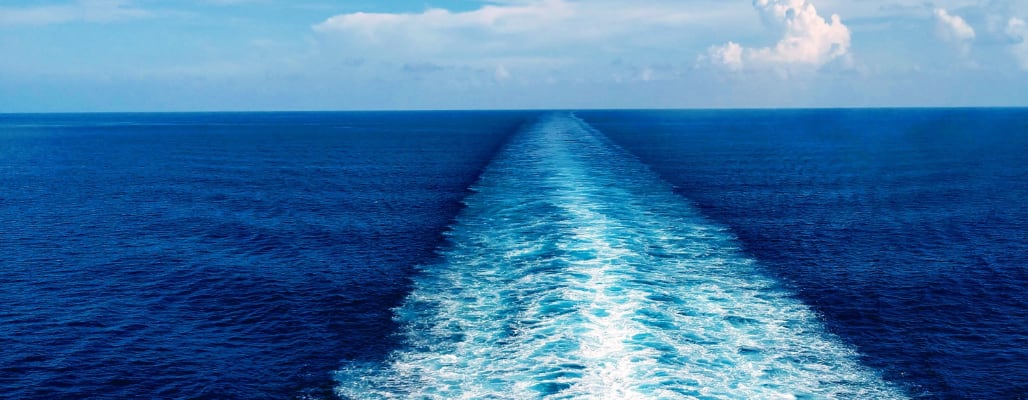In a shopping cart, the swivel wheels of the cart are set in the front, and the fixed wheels are set in the back.
Now picture yourself pushing a shopping cart backwards. Almost naturally, you swivel the cart to move the front end to one side or the other before beginning to push the cart. Now picture yourself pushing a shopping cart backwards, on an ice rink. Here, the cart keeps sliding around even after you’ve stopped pushing it. Instead of going straight from one end of the rink to the other, the cart makes giant S-shaped turns.
The rudder on a boat works the same way your hands do on a shopping cart — it moves the stern to one side or the other to change the overall direction the boat is pointing in. To get the boat to the correct destination you turn the rudder slightly and then hold it there until the point of the boat (the direction you are heading) stops changing. The heavier the boat is, and the faster it’s going, the more it will keep turning after you stop moving the rudder.
The impact of momentum means we need to use a different technique to drive a small speed boat than we do to drive a large ocean liner. The speed boat reacts to changes in direction quickly, whereas the weight and momentum of the ocean liner mean it reacts to changes much more slowly.
A small organization is like a speed boat. A large organization is like an ocean liner.
In a small organization — the speed boat — we can drive reactively by making small adjustments to the wheel. We can observe the reaction of the boat, stop turning when we feel we are pointing in the right direction, and watch as the boat settles into its new course. Along the way, we can make small adjustments as necessary and react in real-time to what we observe.
Contrast this with a large organization — the ocean liner. Because of the weight and momentum of an ocean liner, we cannot effectively change direction by simply turning the wheel and watching what happens. Instead, we plan for the change, plot the new course, and make adjustments to engine speed. The mass and momentum of an ocean liner mean a subtle change in direction of two degrees north or south can result in large changes in direction over time and distance.
As a leader of an organization we need to use the proper steering technique for the size of the organization. If you are working in a small organization, steering like an ocean liner will be ineffective because the time it takes to plan and plot course changes means we will miss opportunities by not observing and reacting. Similarly, if you are working in a large organization, you cannot steer effectively by grabbing the wheel and pulling — the momentum behind the boat is too strong.
Obama used this same metaphor to describe how big democratic societies work:
They are like ocean liners: you turn the wheel slowly, and the big ship pivots. Sometimes your job is just to make stuff work. Sometimes the task of government is to make incremental improvements or to try to steer the ocean liner two degrees north or south so that, ten years from now, suddenly we’re in a very different place than we were. At the moment, people may feel like we need a fifty-degree turn; we don’t need a two degree turn. And you say, well, if I turn fifty degrees the whole ship turns over.
Adam Gopnik in the May 23, 2016 edition of The New Yorker notes that the president wasn’t saying that big ships aren’t worth turning, just that it takes time. Their size is what makes them turn slowly, but their size is also what makes them worth turning.
